I’ve bought a lot of games for the Playstation 3. In fact, I’ve exaggerated during those years, having bought many games which still remain wrapped in plastic up to this day. The Atelier series, in particular, is an example of this bad compulsory gaming behavior of mine.
I have basically bought every single main game from the Atelier series released exclusively for the Playstation 3 (which means six games in total), yet I only did unwrap a single one of them: Atelier Rorona. Why? Well, that’s a bit more complex, so let me try to explain it.
The Atelier games always enticed me because of their casual and mundane stories. They were not about saving the world from disaster or defeating the greatest evil of the land. Heck, they were not even about warfare and political schemes. Every Atelier game has been a simple tale of a young girl (or duo) becoming an alchemist, meeting people, and trying to get better to either help others, succeed in an exam, or simply find purpose in their lives. It’s absurdly mundane, yet that’s why it is magical and have always caught my attention. There is no other RPG series such as this.
The Atelier games, however, have always been tied to a “time limit”, usually ingame deadlines where you need to deliver a crafted component or meet some other requirements. Atelier Rorona and the early games in the Playstation 3 were pretty heavy in that aspect. In fact, my experience with Atelier Rorona ended up when, after three hours of playing, I’ve found out that I’ve missed a trophy and two events that would require me to either start again or replay the game. Well, that happens to be one of the two things I hate the most in games. So yeah, it was a kick in my stomach that made me drop the game and never even touch the others, even though I was still buying them for some reason.
Enter Sophie
Regardless of not playing the games, I was still on the lookout for the Atelier series. When Atelier Sophie: The Alchemist of the Mysterious Book released, it seemed it was the right time to try it again.
Atelier Sophie retains the very same aura of the series. Its story is a simple coming of age tale of young Sophie as she learns alchemy from a mysterious talking book and tries to help it restore its memories. In this mission, Sophie will grow from a clumsy girl to a respected alchemist in the city of Kirchen Bell, helping its inhabitants and exploring the region in search for ingredients and secrets that could help her better understand the mysterious talking book.
The major difference between Atelier Sophie and the previous games of the series, for me at least, is the fact that it completely ditches the enforced time limits and missable events. Instead of keeping an eye on the clock and planning your schedule to see events regarding other characters, you can simply play the game at your own pace, exploring the world, collecting materials, crafting items, and talking to people whenever you are ok with it.
This sensation of freedom broke the shackles that held me against the Atelier series, and finally I could enjoy the leisure trip in this fantasy land by seeing Sophie grow while being taught and scolded by Plachta, the wise doll-form of the talking mysterious book.
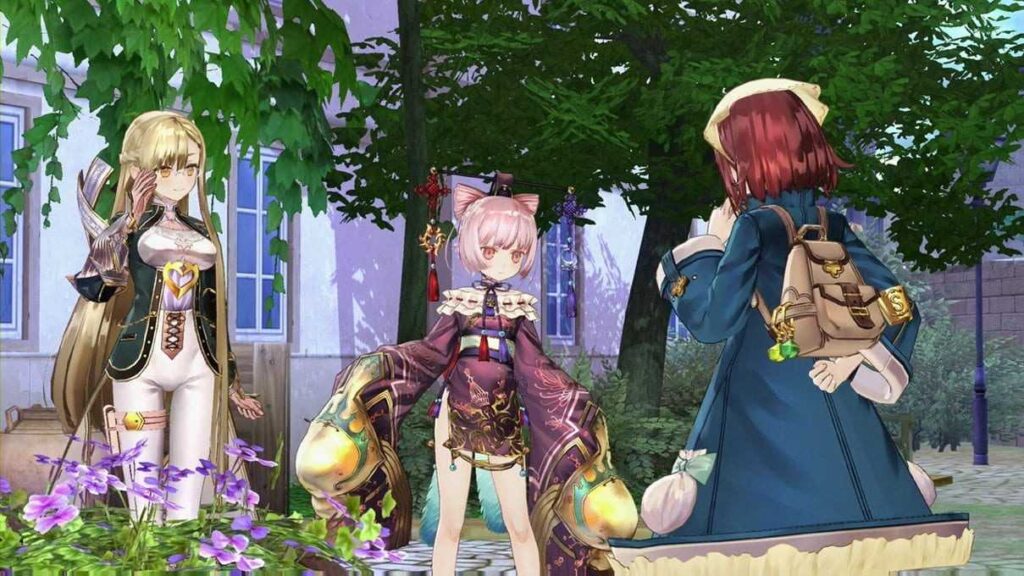
The Atelier Formula
For those who never played an Atelier game, the formula is pretty simple. The protagonist is an alchemist and she has a cauldron where she mixes everything she finds along the way, such as plants, ores, paper, monster’s bones, dragon’s scales, and liquids. After doing some quests, helping people, fighting monsters, and interacting with the world, Sophie comes up with new recipe ideas, varying from catalysts used in advanced recipes to weapons, armors, healing items, key items, and decorative stuff.
Although there is a major plot moving the game, which in this case is recovering Plachta’s memories, the overall progression is widely open to your desires. Most quests can be acquired by talking to the people of Kirchen Bell, but to complete them, you are most likely required to travel out in the wilderness, which is divided in small hubs where you can gather crafting materials and fight a variety of monsters.
As you walk around these hubs and collect things, however, you waste a resource called LP. You can recover it by returning to Kirchen Bell or using items, so you need to have some sort of preparation before heading out. Although this may seem restricting, this system ends up helping you to take your time exploring the land, spending a few minutes gathering at early maps at first and slowly reaching farther areas as you gain confidence. Remember, there are no deadlines anymore here.
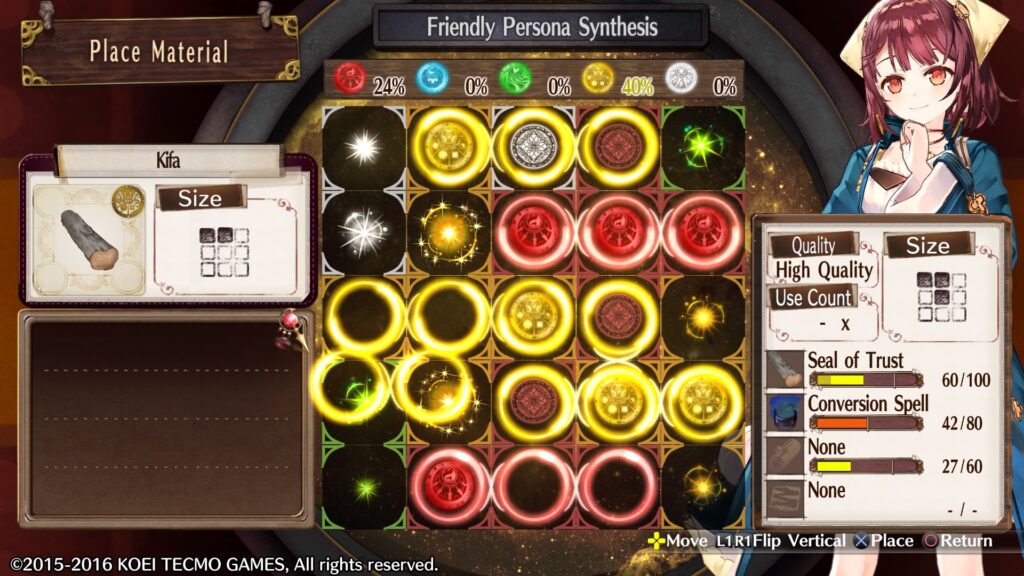
The Crafting
The reason you walk around the map and gather stuff is to partake in the game’s most time consuming mechanic and the heart of the Atelier series: item crafting.
With each alchemy recipe you have a list of items. Sometimes a recipe require a specific kind of item, but most likely it will need one of a certain generic type, such as any kind of wood, any kind of fabric, and so on. Each item you gather, in addition to its type, has a lot more attributes: quality, components, size, and traits being the most important.
After selecting the items, you throw them into the cauldron, which is represented by a grid with a few special lines in it. This is where the magic of the game happens, requiring you to select the ingredients (given the form of tetris pieces) and place them in a way you may increase the bonuses of certain colors while filling lines and combining traits. Yes, it can get really complex, like a puzzle, but rest assured that it is introduced with a manageable pace, with many quests teaching you how to extract the best of this intricate crafting system.
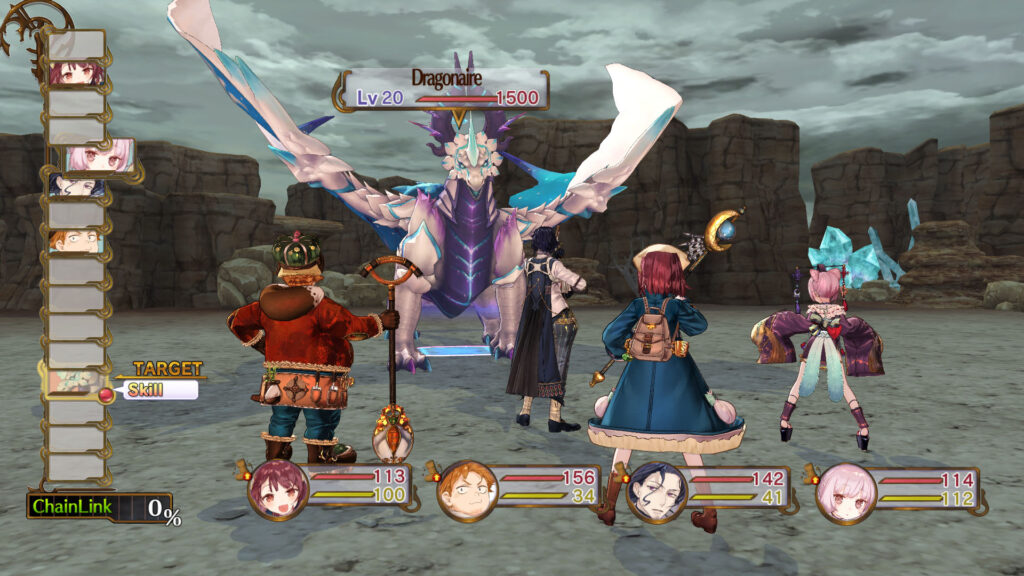
Combats and Allies
Of course, you won’t be wasting away your time with alchemy just to craft silly quest items. You can craft weapons, armors, bombs, healing salves, cookies, and a lot more to use while exploring and fighting. The fight, in particular, is an overlooked aspect of the Atelier series, which uses a simple turn-based combat that is fast-paced, vibrant, and open to a lot of experimenting with the four-man party setup and a wide array of skills and items to use.
The combat may even prove quite punishing to newcomers, as simply leveling up does not give you enough power to withstand the attacks of tougher enemies. Remember, this is a crafting game, so most of your firepower and defense will come from enhanced crafted items, which can turn you into a godly group of heroes after a few experimentations. Before getting your own crafted equipment, however, you are likely to find yourself running from tough foes and avoiding combat altogether while exploring new maps for materials.
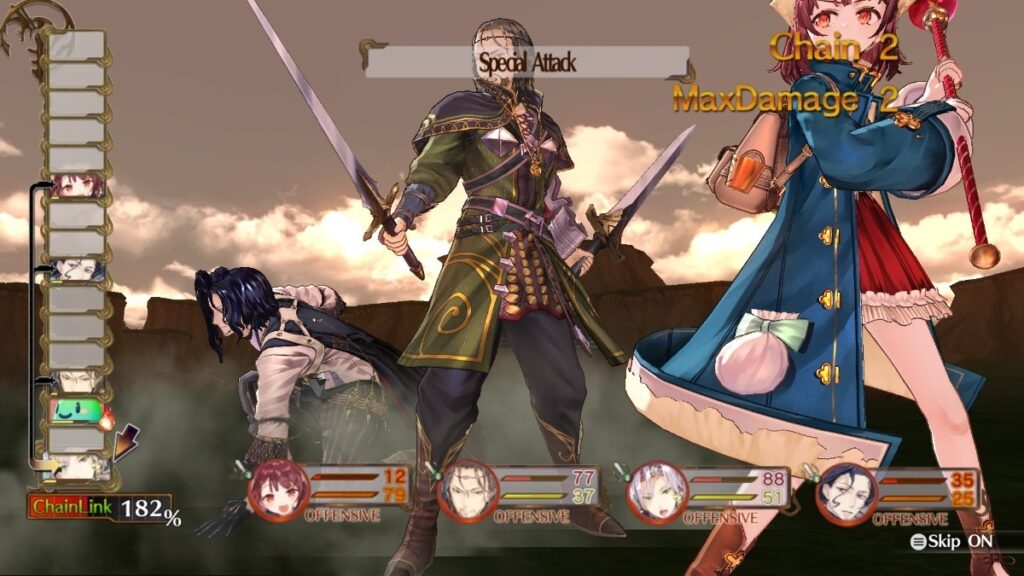
Sophie is not alone in her struggles against punis and happy flower enemies. She gets help from Plachta, surely, but she is also aided by a large number of people. She has Oskar with his ability to hear the voice of flowers. There is Monika with her swordsmanship and intelligence. The young Corneria will duplicate items as she shrinks. Harold is a master clocksmith who also crafts firearms. Sophie also knows a tailor who is also a spearmaster named Leon. She can talk about creepy puppets with Fritz when he is not slicing puni alongside her. Well, there is also Julio, a knight dabbling in alchemy.
Those guys can be used in combat, each with their own set of skills and equippable gear. Having four of them allows for a lot of experimenting and, even if simple, the system can be quite enjoyable for its duration and demand. Remember, you won’t necessarily be fighting that much here, the focus is in crafting and solving people’s problems with it.
Everyone is here
In fact, besides these playable characters, there are a lot more people to talk to and get quests from. In the end, Sophie will be the heart of a big social hub for people to talk away their problems and ask for help, which she will promptly offer.
The cast, in general, can be quirky and mostly solidified to anime tropes that you are probably tired of, yet, given the gaming formula and the cheerfulness of Sophie and her friends, it is joyful to see them talking to each other, having their problems vented and solved, and ultimately making the world of Atelier feel like a happy thing.
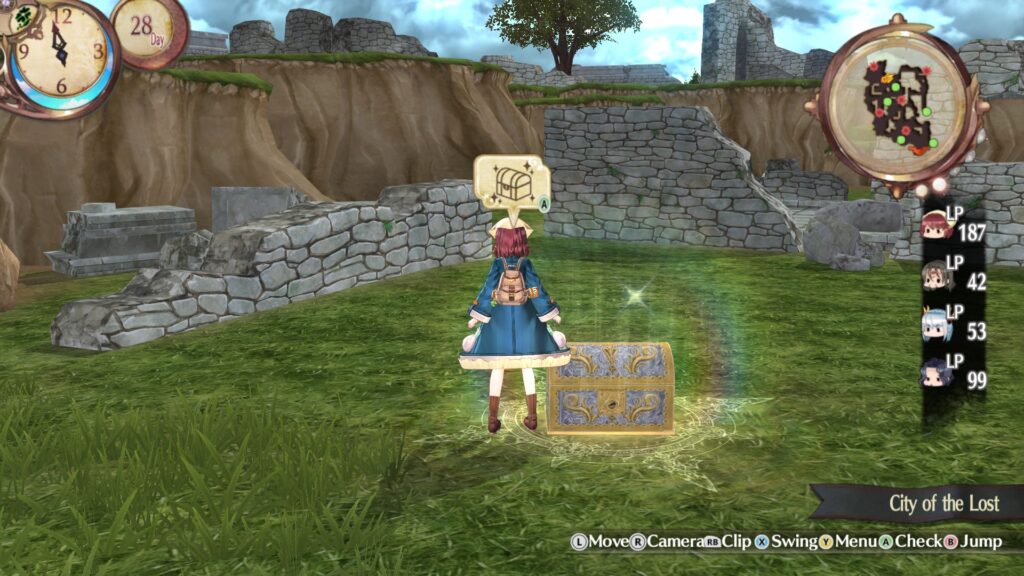
It should be played more
Well, it may lack a masterful tale or complex and engaging characters but, Atelier Sophie, much like others in the series, is a charming experience of meeting new people and walking through mundane problems that our young protagonist can solve as she grows as an alchemist and as a person. The simple combat system works just fine and the exploration is decent enough with the small maps and a lot of items to gather. The crafting system, in particular, is a blast to toy with, especially after you understand it better. Using what you craft in combat or when exploring makes everything else a lot more engaging.
A perfect starting point for newcomers. Atelier Sophie: The Alchemist of the Mysterious Book is a game that deserves a lot more attention. Ditching the time limit really makes the adventure feel much more open, free, and also carefree. Yeah, try it if you have the chance.
Detailed Scores
-
Production
-
Content
-
Polish
-
Concept
-
Fun
